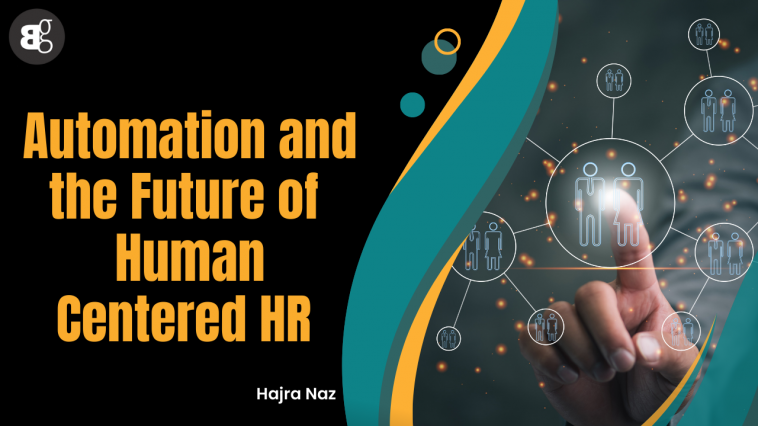In today’s rapidly evolving business landscape, HR departments are facing increasing pressure to keep up with the demands of a diverse workforce while maintaining high levels of efficiency and productivity.
For HR professionals looking to streamline processes, enhance employee experiences, and empower their workforce, embracing automation has emerged as a transformative solution. The benefits, drawbacks, strategies for implementing automation in HR, and potential future trends are examined in this article.
What is Automation in HR?
The utilization of technology and programming to streamline and mechanize various HR cycles and obligations is referred to as automation in HR. It entails making use of data analytics, artificial intelligence (AI), robotic process automation (RPA), and machine learning to improve workflows, reduce manual labor, and improve HR performance as a whole.
Benefits of Automation in HR:
Streamlining Recruitment and Onboarding Processes: Automation simplifies and accelerates recruitment by automating job postings, resume screening, applicant tracking, and interview scheduling. It also enables seamless onboarding through automated paperwork, training modules, and employee orientation.
Enhancing Employee Experience: Automation enhances the employee experience by providing self-service portals for accessing HR information, managing benefits, requesting time off, and tracking performance. This self-service model empowers employees and reduces administrative burdens.
Improving Accuracy and Efficiency: By automating repetitive tasks like data entry, payroll processing, and leave management, HR professionals can minimize errors and free up time for more strategic initiatives. Automation also enables faster data retrieval and analysis, leading to data-driven decision-making.
Ensuring Compliance and Data Security: HR automation helps organizations stay compliant with changing regulations and ensures data privacy and security. Automated processes provide audit trails, maintain accurate records, and implement access controls to protect sensitive employee information.
Leveraging Data Analytics for HR Insights: It enables HR professionals to collect and analyze large volumes of HR data. Organizations can obtain useful insights into employee performance, engagement, turnover, and other important variables by utilizing data analytics, allowing for data-driven decision-making and predictive workforce planning.
Empowering HR Professionals: Automation frees HR professionals from manual, time-consuming tasks, allowing them to focus on strategic initiatives such as talent development, employee engagement, and culture building. It empowers HR teams to become strategic partners in driving organizational success.
Challenges and Considerations of HR Automation:
While HR automation offers numerous benefits, it also presents certain challenges and considerations that organizations need to address:
Overcoming Resistance to Automation: Employees may resist automation due to fear of job displacement or a lack of understanding about its benefits. Organizations need to communicate the value of automation, provide training and support, and emphasize how it enhances employees’ work experience.
Implementing Automation Strategies: Successful implementation of HR automation requires careful planning, change management, and collaboration between HR, IT, and other stakeholders. Organizations should develop a roadmap, prioritize processes for automation, and ensure effective integration with existing systems.
Choosing the Right HR Automation Tools: There are various HR automation technologies accessible, making it hard to pick the best ones. Organizations should evaluate their specific needs, consider scalability and compatibility with existing systems, and choose tools that offer user-friendly interfaces, robust features, and reliable support.
Future Trends in HR Automation:
The field of HR automation is continuously evolving, driven by advancements in technology and changing workforce dynamics. Here are a few future patterns to watch:
AI-powered Chatbots and Virtual Assistants: Artificial intelligence-powered chatbots and virtual assistants will assume a huge part in HR automation. They will provide personalized employee support, answer FAQs, assist with HR processes, and facilitate real-time communication.
Predictive Analytics for Workforce Planning: Predictive analytics will enable HR professionals to forecast future talent needs, identify skills gaps, and proactively develop strategies for recruiting, upskilling, and succession planning.
Robotic Process Automation (RPA) in HR Operations: RPA will continue to streamline repetitive HR tasks, such as data entry, payroll processing, and benefits administration. This will free up HR professionals to focus on strategic initiatives and higher-value activities.
Employee Engagement and Performance Analytics: Organizations will be able to collect data on employee performance and engagement in real-time, permit proactive interventions and individualized development plans, and increase overall employee happiness.
Remote Work and Collaboration Tools: HR automation will include tools for virtual onboarding, collaboration platforms, performance management systems, and employee feedback mechanisms as remote and hybrid work patterns become more prevalent.
Conclusion:
For relationships to adjust to the moving parts of the cutting-edge working environment, they should embrace automation in HR. HR chiefs might further develop representative encounters, smooth out tasks, and engage their teams by using technology and automation advances.
While difficulties and contemplations exist, the advantages far offset the disadvantages. As HR automation continues to create, affiliations need to stay informed about the latest examples and embrace automation as a method for making a more human-engaged and useful HR experience.




